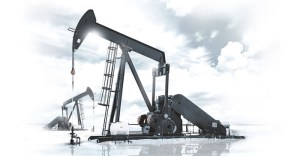Using the concept of the Internet of Things (IoT), more systems and processes are being connected on the oilfield; the industry itself is making monumental progress by incorporating computers and sensors that take equipment control and data processing to the next level. Used for applications such as data acquisition, control room management, exploration and wellhead monitoring, these systems help create a safer and more productive environment. By connecting field staff with world-renowned experts, oil producers can make informed critical decisions based on the evaluation of easily accessible, real-time data. But which requirements must be fulfilled to ensure that a system provides access to essential data at some of the most challenging environments across the globe?
Satisfying Rugged Reliability
Of course, managing increasing amounts of data in the field requires a specialized high-end, rugged computer that offers both performance and reliable connectivity. These high-performance systems must be built to withstand rough handling and provide 24/7 operation in extreme environmental conditions ranging from the Arctic cold to desert heat. So working with worldwide computing manufacturers is now a necessity to address these requirements, ensuring that every aspect of performance and system development is considered as a means of ensuring reliability. While avoiding downtimeis essential in most embedded environments, it is an absolute necessity in the oil and gas industry as system failure equates to lost revenue. Failure can also be based on the mere challenge of getting the same system back in place quickly. It all comes down to maintaining the highest reliability and every feature or component in the system should be evaluated from that perspective. Going beyond uptime assurances, systems with long-term availability reduce in-field operational costs and the need for frequent personnel training. Connected systems extend value even further, enabling remote system debugging. Best practices for oil and gas computing also include uninterrupted supply lines and ready access to knowledgeable global support. Ideally, system support is also available in the region where the system is deployed.

Differentiating Reliability with Advanced System Testing
For oil and gas deployments, systems must be based on sophisticated testing protocols—simulating the rigors that complicate system performance every day. Kontron, for example, executes an extensive range of protocols such as safety and emissions, shock and vibration as the most conventional method to determine Mean Time Between Failures (MTBF). For vibration and shock tests, the test system is held in a fixed position via girders and threaded rods to a shaker and slip table. Specific levels of shock and vibration are applied and verified on three axes of the test object, in this case the rugged chassis of an industrial PC. Results are reported and evaluated in terms of both mechanical damage and verified functionality. During testing, a running control signal is recorded, and assists in determining any functional issues that may occur along with any mechanical or visual damage to the system.
Results of these tests are represented by the singular MTBF rating—acceptably high, and a good tool for calculating reliability. For oil and gas customers, additional testing can provide greater confidence in system reliability; Kontron performs extended tests such as Highly Accelerated Life Testing (HALT) and Highly Accelerated Stress Screening (HASS) as needed for system deployment. In a close approximation of real world operations, HALT is performed in the design phase of product development. HALT exposes the product to an incremental cycle of environmental variables such as temperature, shock and vibration, applied together and separately in random combinations. Ultimately it is the goal of HALT testing to break the product; weaker components are identified and addressed one at a time until a high reliability factor is proven. HASS is a form of HALT testing, and is ongoing screening of production units themselves. The purpose of HASS is to not to break the product, but rather to verify its performance during the cycling of various and extreme environmental stresses.
At the least, quality and ultimately reliability of a product is the culmination of the components, materials, processes and development expertise that comprises its design and manufacture – and Kontron promises that we will keep on driving the technology revolution on oilfields!
If you want to know more about oil and gas data acquisition, click here to receive our whitepaper.


{{comment.comment}}